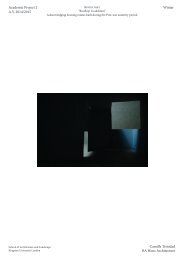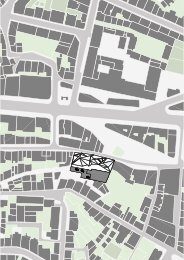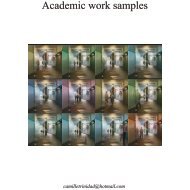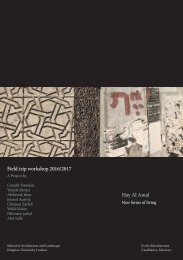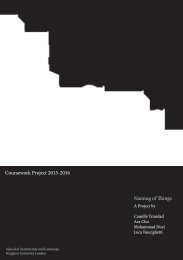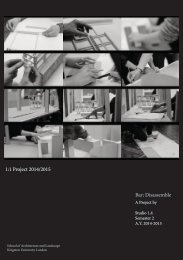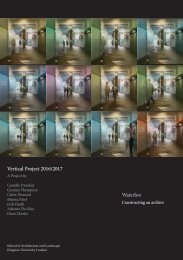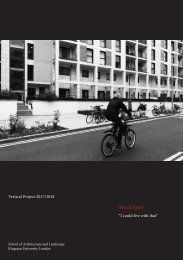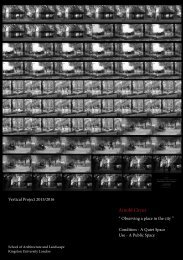National Theatre of the Philippines
My final year dissertation which explored a symbolic edifice in Manila, built by the National Artist for Architecture as per request of the former First Lady of the Philippines. It discusses Architecture's innate role in a political society, specifically in a country that has undergone centuries of colonialism; which got an overall grade of A.
My final year dissertation which explored a symbolic edifice in Manila, built by the National Artist for Architecture as per request of the former First Lady of the Philippines. It discusses Architecture's innate role in a political society, specifically in a country that has undergone centuries of colonialism; which got an overall grade of A.
Create successful ePaper yourself
Turn your PDF publications into a flip-book with our unique Google optimized e-Paper software.
ingrained within <strong>the</strong> Puerto Rican identity. It became a representative <strong>of</strong> <strong>the</strong>ir ideals as<br />
<strong>the</strong>y selectively retrieve <strong>the</strong>ir Spanish heritage amidst <strong>the</strong> feeling <strong>of</strong> nostalgia.<br />
32<br />
But this did not happen in <strong>the</strong> <strong>Philippines</strong> as <strong>the</strong> country had a different response in<br />
accumulating and taking in <strong>the</strong> American culture. One significant change was <strong>the</strong> use <strong>of</strong><br />
American alphabet as its own <strong>of</strong>ficial one. The country absorbed <strong>the</strong> influence <strong>of</strong> its<br />
conqueror as like a sponge. This is because it had no singular cultural identity.<br />
<strong>Philippines</strong> already had an old civilisation, which were originally from <strong>the</strong> Malay and<br />
Chinese, even before Ferdinand Magellan discovered it. This makes <strong>the</strong> <strong>Philippines</strong><br />
already culturally diverse even during <strong>the</strong> Spanish rule.<br />
Fast forward to 60 years later, during <strong>the</strong> Marcos regime (1965 - 1986) in <strong>the</strong><br />
<strong>Philippines</strong>, <strong>the</strong> government declare New Society / New Filipino project for <strong>the</strong> country.<br />
The idea <strong>of</strong> Palingenesis<br />
33<br />
(a utopian idea <strong>of</strong> rebirth or spiritual regeneration to<br />
reconnect with <strong>the</strong> past) is to be evoked within <strong>the</strong> culture and tradition <strong>of</strong> <strong>the</strong> nation.<br />
During <strong>the</strong> Martial Law, this regime consolidated nationalism with a mode <strong>of</strong> identity<br />
and modern progress. There were two particular rules about <strong>the</strong> resolution to our<br />
identity in this new society: 34<br />
1. Identity as a derivative <strong>of</strong> primeval ancestry<br />
2. Identity as evidence <strong>of</strong> human progress made possible through art<br />
The continuous ambition <strong>of</strong> this scheme resulted <strong>the</strong> amalgam <strong>of</strong> national identity to<br />
architecture and politics.<br />
32 Vivoni-Farage, Enrique, “The Architecture Of Power", Cmu.Edu https://www.cmu.edu/ARIS_3/vivoni/frameset_vivoni.html (accessed 18 July 2017)<br />
33 "Palingenesis", En.Wikipedia.Org https://en.wikipedia.org/wiki/Palingenesis (accessed 25 September 2017)<br />
34 Lico, Gerard, Arkitekturang Filipino (Diliman, Quezon City: University <strong>of</strong> <strong>the</strong> <strong>Philippines</strong> Press, 2008) p 452<br />
!44




